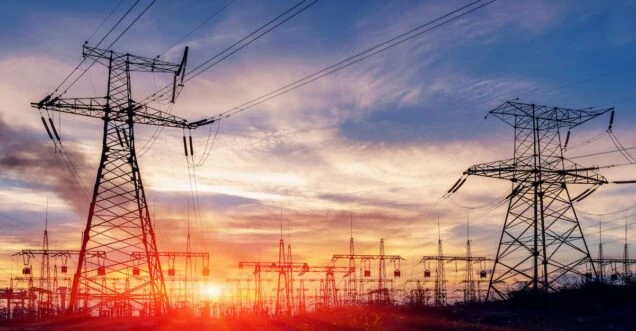The browser you are using is not supported. Please consider using a modern browser.

PJM Warns of Potential Summer Power Shortages in Pennsylvania and Beyond
Key Takeaways
- PJM is warning that electricity demand may exceed supply for the first time this summer, especially in Pennsylvania.
- Record heat, the retirement of power plants, and surging data center demand are straining the Mid-Atlantic power grid.
- Consumers can prepare by reducing peak energy use and comparing electricity plans on ElectricityRates.com.
Table of Contents

As summer arrives, PJM Interconnection—the regional grid operator serving 13 states and D.C.—is sounding the alarm. In a May outlook, PJM revealed that under an “extreme planning scenario” this summer, electricity supply could fall short of demand—marking a first for the region. The issue is especially critical in Pennsylvania, where aging coal and nuclear plants are being retired, while demand continues to rise unchecked.
This isn’t hyperbole: temperatures are predicted to soar across the Mid‑Atlantic, pushing residential and commercial air conditioning usage—and electricity loads—to levels unseen in recent years. Grid operators are already bracing themselves by issuing maximum generation alerts and recalling maintenance crews to ensure all generation assets remain online through peak usage days.
Energy‑sector stakeholders are deeply concerned. If PJM’s demand forecasts—peaking over 166,000 MW—materialize, contingency reserves may be stressed to the brink. That’s a warning sign: PJM has the authority to order load shedding, often referred to as rolling blackouts, to prevent a total system collapse.
Summer Weather Forecast and Its Impact on Energy Demand
This year, the National Weather Service and private forecasters predict sustained 90‑plus°F heatwaves with high humidity — classic drivers for an uptick in electricity use. Recall that PJM’s previous peak consumption record, set in 2006, was roughly 165,563 MW — just ahead of this summer’s projected 160,000-166,000 MW.
In Pennsylvania, that means air‑conditioning systems across households, stores, offices, and warehouses will be working overtime. The extended summer may also impact water-cooled power plants, which rely on an ample water supply — another vulnerability if drought hits hard.
Other Factors Straining the Energy Grid
Retiring Power Plants and Delayed Infrastructure
Aging coal and nuclear units are being shut down due to economic pressures and environmental mandates—part of a national trend. Pennsylvania’s Constellation Energy had planned to retire the Eddystone coal-fired plant, but the DOE ordered it to remain online through at least late August to support grid stability amid rising demand.
Similarly, other plants are being phased out faster than new ones can be built. PJM estimates that power shortages could extend beyond 2026 if replacements don’t keep pace.
Data Centers and AI Energy Demands
A major new demand driver is Big Tech’s explosion in data centers — especially those focusing on AI.
By the end of 2024, developers have filed permits to build over 1,200 new centers. These facilities are projected to consume as much electricity as entire states, with U.S. data center demand potentially doubling by 2026.
Inside PJM, this trend translates to a 3.1% annual growth in summer peak load forecasts through 2035, double the rate from just a year ago. Policy discussions are underway: FERC commissioners and state regulators are urging data centers to procure generation capacity and transparency to avoid undue strain on the grid.
Natural Gas Supply Uncertainties
A cold winter depleted natural gas storage — leading to higher fuel prices for gas-fired power plants. Coupled with the logistical demands of ramping up generation, this sector may face equipment shortages or price spikes—all of which increase the risk of shortages when demand is highest.
What PJM and Mid‑Atlantic States are Doing to Ensure Grid Stability
PJM’s Proactive Strategies
- Demand response activations: PJM has pre-contracted approximately 7,900 MW of demand response. If triggered, these programs prompt businesses and homes to reduce their use during periods of stress.
- Generation alerts and maintenance recalls: All available power units are being called back online to avoid scheduled downtime during peak load.
- Market design and interconnection reforms: PJM is fast-tracking solar, wind, and battery storage interconnections via a “Critical Issue Fast Path” to bring more capacity online sooner — and streamline planning with AI assistance from Google and Tapestry.
State and Federal Interventions
- DOE directive: The Department of Energy used its emergency authority to keep the Eddystone power plant online through August 28, alleviating some immediate capacity concerns.
- Three Mile Island nuclear restart: Constellation aims to accelerate the relaunch of TMI Unit 1, the site of the U.S.’s worst nuclear disaster, to provide carbon-free power exclusively for Microsoft’s AI data centers. However, the plant won’t be back online until 2028.
- Regulatory steps in nearby New Jersey: State legislators are pushing for data center–specific energy rates, cost-sharing for grid upgrades, and accelerated residential solar approvals to offset demand.
- Long-term infrastructure efforts: Across the region, new gas plants, massive AI-focused on-site power systems (like GridFree AI), and advanced energy storage projects are being pursued to permanently boost reliability.


Simple Switch, Big Savings
Compare rates from leading providers and make the switch in only a few minutes.
Don’t Wait for Alerts – Prepare Now!
PJM’s warning this summer is more than industry jargon — it’s a real-world signal to stay alert. Here’s what households and businesses can do now:
- Monitor your electricity plan: Rates can spike during peak events, especially when demand response is activated. Use ElectricityRates.com to compare electricity plans tailored to your usage — get a low-rate plan or one that rewards you for off-peak consumption.
- Cut consumption during peak hours: Turn up your thermostat a few degrees, delay laundry or EV charging until evening, and plug into demand response programs if your utility offers them.
- Make your home energy-efficient: Explore our resources — from LED lighting and smart thermostats to insulation and window upgrades—that help reduce your electric bill and alleviate grid stress.
- Stay informed: Track PJM alerts or local utility notifications this summer so you’ll know when to conserve. Every kilowatt-hour saved is another step toward preventing shortages.
By researching competitive electricity plans and implementing even small energy-saving upgrades, you can lower your summer bills and support overall grid reliability. Visit our electricity marketplace to discover the best energy plan for your household or business and explore helpful tips and rebates to become more energy-efficient. It’s a smart move — for your wallet and your community.



